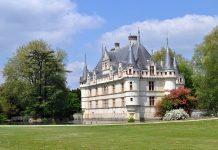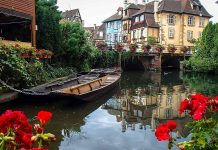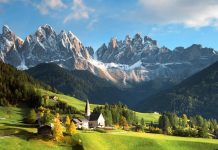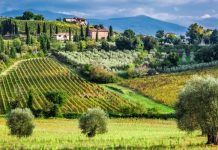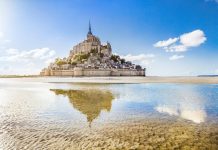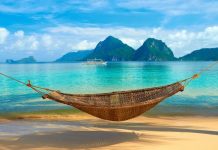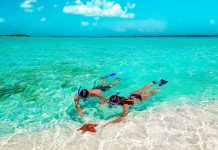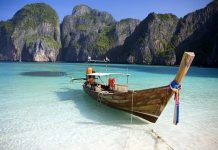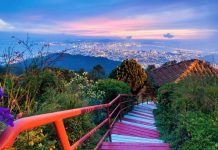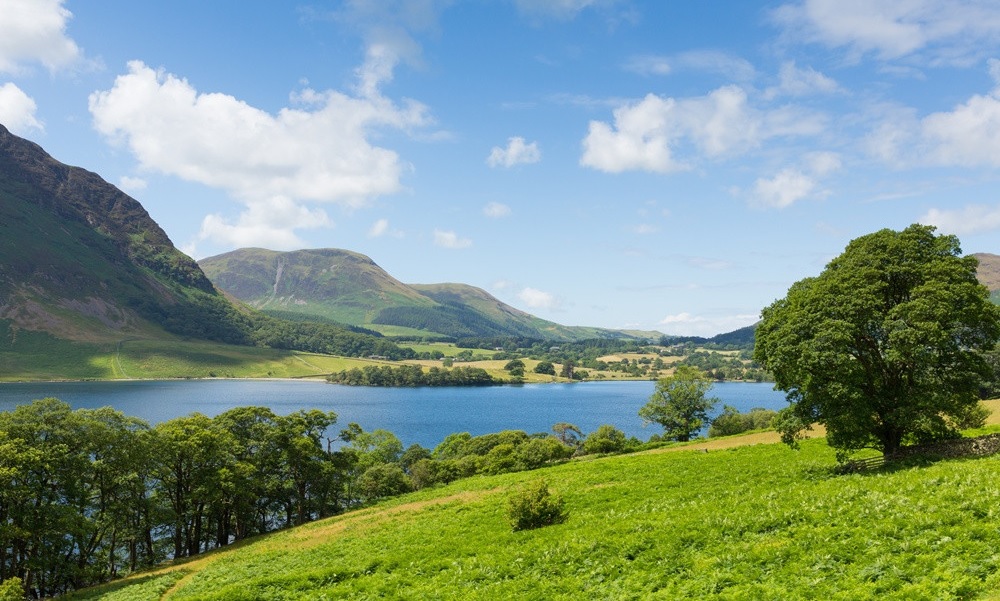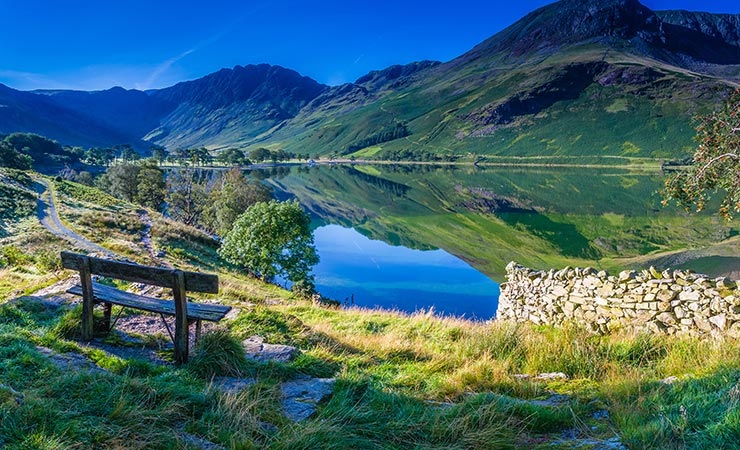
The Lake District: Wander Wordsworth’s Land. Hike, Boat & Breathe in England’s Picturesque Heart
Forget mere scenery; the Lake District National Park in Cumbria, Northwest England, is an immersive experience for the soul. It’s a land sculpted by ancient glaciers into a breathtaking symphony of rugged fells (mountains), shimmering meres (lakes), and verdant valleys, forever entwined with the spirit of Romantic poetry. To visit here is to step directly into the landscape that inspired William Wordsworth and his contemporaries – a place where the call to wander, hike, boat, and simply breathe becomes irresistible.
Wander Wordsworth’s Land: Tracing the Poet’s Footsteps
The Lake District is Wordsworth’s land. Born in Cockermouth and deeply rooted in Grasmere and Rydal, he famously declared it “the loveliest spot that man hath ever found.” To wander here is to follow his muse:
- Dove Cottage, Grasmere: Step into the intimate world of Wordsworth, his sister Dorothy, and later Samuel Taylor Coleridge. This charming, slightly cramped cottage was his creative home during his most prolific years (1799-1808). Wander through the small rooms filled with original belongings, feel the weight of history in the garden he lovingly tended (“a little nook of mountain-ground”), and imagine verses like “I Wandered Lonely as a Cloud” taking shape.
- Wordsworth Grasmere (formerly the Wordsworth Museum): Adjacent to Dove Cottage, this modern museum houses an unparalleled collection of manuscripts, letters, and personal artefacts. It delves deep into Wordsworth’s life, his revolutionary poetic vision, and his profound connection to the surrounding landscape.
- Rydal Mount, Ambleside: Wordsworth’s final and more spacious home (1813-1850). Explore the elegant house and its beautiful terraced gardens, designed by the poet himself, offering stunning views over Rydal Water. It provides insight into his later, established life as Poet Laureate.
- The “Daffodil” Walk (Glencoyne Bay, Ullswater): Embark on the gentle stroll along the western shore of Ullswater. It was here, in April 1802, that Wordsworth and Dorothy encountered the “host of golden daffodils” immortalized in his most famous poem. Seeing the flowers dancing in the breeze by the lake shore (best in spring, naturally) is a powerful literary pilgrimage.
- Grasmere & Rydal Water: Simply wander the paths around these smaller, intimate lakes. Walk the “Coffin Route” (an old corpse path) between Grasmere and Rydal, or sit by the Rothay River. Feel the tranquility that Wordsworth so cherished and described with such evocative power.
Hike: Conquer the Fells and Discover Hidden Valleys
The Lake District is a hiker’s paradise, offering routes for every level, from lakeside ambles to challenging mountain ascents. Lace up your boots and breathe deep:
- Iconic Summits:
- Scafell Pike: England’s highest peak (978m). The ascent is demanding but rewards with unparalleled panoramic views. Choose routes from Wasdale Head (shorter, steeper) or Langdale (longer, more scenic).
- Helvellyn: Famous for its thrilling ridges. Striding Edge (a narrow, airy arête) and Swirral Edge offer adventurous routes, while the gentler ascent from Thirlmere provides stunning vistas without the exposure. Red Tarn nestled below adds dramatic beauty.
- Catbells, Keswick: The perfect “starter fell.” This modest peak (451m) near Derwentwater offers relatively easy climbing and absolutely spectacular views over Derwentwater, Borrowdale, and Skiddaw. A family favourite.
- Classic Valleys & Passes:
- Borrowdale & Honister Pass: Explore the “Jaws of Borrowdale” with its dramatic crags, wander through the picturesque villages of Rosthwaite and Stonethwaite, or brave the steep climb up Honister Pass (home to a famous slate mine and via ferrata).
- Great Langdale & Little Langdale: A majestic valley dominated by the Langdale Pikes (Pike of Stickle, Harrison Stickle). Hike to Stickle Tarn, explore the dramatic Mickleden valley, or find the hidden beauty of Cathedral Cave and Little Langdale Tarn.
- Buttermere & Crummock Water: Often considered the most beautiful valley. Walk the relatively flat, stunning path around Buttermere lake itself, flanked by high fells like Haystacks (a Wainwright favourite), Fleetwith Pike, and High Stile.
- Essential Tips: Always check weather forecasts (conditions change rapidly in the mountains), wear sturdy boots and waterproof layers, carry an OS map and compass (and know how to use them!), pack plenty of water and food, and respect the countryside code (leave no trace).
Boat: Glide Across Liquid Mirrors
Seeing the fells reflected in the tranquil waters is quintessential Lakeland. Boating offers a unique, serene perspective:
- Steamers & Launches:
- Windermere: England’s longest lake. Take a classic cruise from Bowness or Ambleside to Lakeside (south) or Brockhole (north), soaking in views of wooded islands, grand villas, and distant fells.
- Ullswater: Arguably the most beautiful lake. Sail on the elegant Ullswater ‘Steamers’ from Glenridding, Pooley Bridge, or Howtown. The journey down the lake, particularly towards Glenridding with Place Fell rising steeply, is breathtaking. Pass Aira Force waterfall.
- Coniston Water: Sail on the National Trust’s restored Victorian steam yacht, Gondola, or modern launches, enjoying views of the Old Man of Coniston and Brantwood (John Ruskin’s home).
- Derwentwater: The “Keswick Launch” offers a circular service with multiple jetties. Hop on and off to explore lakeside woods, viewpoints like Friar’s Crag, and the dramatic Borrowdale valley entrance.
- Self-Propelled Exploration:
- Rowing Boats & Dinghies: Hire traditional wooden rowing boats in Grasmere, Derwentwater, or Ullswater for a charming, hands-on experience.
- Canoes & Kayaks: Paddle peacefully on smaller, quieter tarns like Grasmere, Rydal Water, or Elterwater, or explore the shores of larger lakes at your own pace. Perfect for accessing hidden coves.
- Sailing: Windermere and Derwentwater are popular spots for sailing, with boat hire and lessons available.
Breathe: Immerse Yourself in the Picturesque Heart
Beyond the specific activities, the Lake District demands moments of pure absorption. This is where you truly connect with its spirit:
- Village Charm: Lose yourself in the timeless stone villages. Savor famous Grasmere gingerbread, browse bookshops in Ambleside, explore the bustling market town of Keswick, enjoy a pint in a traditional pub like the Kirkstile Inn near Loweswater, or visit Beatrix Potter’s Hill Top Farm in Near Sawrey.
- Picnic Perfection: Pack local cheeses (Cumberland!), crusty bread, and Kendal mint cake. Find a quiet spot by a tarn, beside a babbling beck (stream), or on a sun-drenched fellside with a view. Tarn Hows is a famously beautiful spot.
- Wildlife Watching: Keep an eye out for native Herdwick sheep (tough and iconic), red squirrels (in quieter woodlands), soaring buzzards and peregrine falcons, and diverse waterfowl on the lakes.
- Starry Skies: As a designated Dark Sky Reserve, escape the light pollution on a clear night. Lie back and marvel at the Milky Way arching over the silhouetted fells – a truly magical experience.
- Simply Be: Sit by the shore of Rydal Water as Wordsworth did. Listen to the wind in the trees on a forest walk. Feel the rain (it is the Lakes!) and watch the mists swirl dramatically around the peaks. Absorb the ever-changing light and colours. This is the essence of “breathing” in the Lake District.
Practicalities for Your Pilgrimage:
- Getting There: Train to Oxenholme (main line) or Windermere (branch line). Major roads are the M6 to the east and A591 north-south through the park. Car is useful but parking can be challenging; consider the excellent Lakesider or Stagecoach buses.
- When to Visit: Spring (daffodils!) and Autumn (spectacular colours) are magical. Summer is busiest but offers long days and best boating weather. Winter is quiet and dramatic, but be prepared for snow on higher fells and shorter days. Always be prepared for rain!
- Accommodation: Wide range from campsites and hostels to B&Bs, traditional inns, luxury hotels, and self-catering cottages. Book well ahead for peak seasons. Popular bases include Ambleside, Grasmere, Keswick, Bowness/Windermere, and Coniston.
- Respect & Protect: The Lake District is a UNESCO World Heritage Site and a working landscape. Stick to marked paths, leave gates as you find them, take all litter home, keep dogs under control (especially near livestock), and respect local communities. Support local businesses.
In Conclusion:
The Lake District is more than a destination; it’s an invitation to engage deeply with nature and literary heritage. Walk where Wordsworth found his inspiration, challenge yourself on windswept fells, glide across serene waters reflecting towering peaks, and find moments of pure peace amidst breathtaking beauty. It truly is England’s picturesque heart, waiting for you to wander, hike, boat, and breathe it all in. Let its timeless spirit rejuvenate your own. Start planning your Lakeland adventure today


